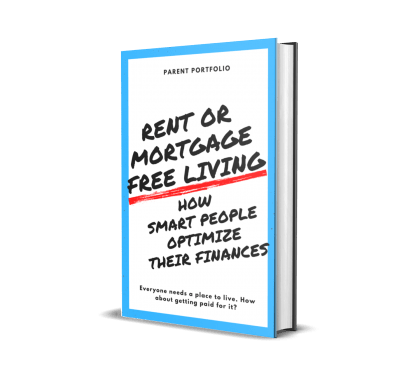12 Retirement Mistakes You Can’t Afford to Make

Part of planning for a secure future is knowing what retirement mistakes to avoid that could potentially cost you money. Some retirement planning mistakes are obvious; others you may not even know you’re making. Being aware of the main pitfalls, or addressing any hurdles now, can help you get closer to your retirement goals, whether that’s traveling around the world or starting a local business.
Planning for Retirement
Knowing what not to do in retirement planning is just as important as knowing what you should do when working toward financial security. Avoiding mistakes when creating your retirement plan matters because of how those mistakes could affect you financially over the long term. The investment choices someone makes in their 20s, for example, can influence how much money they have saved for retirement by the time they reach their 60s.
The good thing about making retirement mistakes is that the younger you are when you spot them, the more time you have to correct them. Remember that preparing for retirement is an ongoing process; it’s not something you do once and forget about. Taking time to review and reevaluate your retirement-planning strategy can help you to pinpoint mistakes you may need to address.
12 Common Retirement Planning Mistakes
There’s no such thing as a perfect retirement plan as everyone is susceptible to making mistakes with their investment strategy. Whether you’re just getting started or you’ve been actively pursuing your financial goals for a while, here are some of the biggest retirement mistakes to avoid — in other words, what not to do in retirement planning.
1. Saving Too Late
There are so many retirement mistakes to avoid, but one of the most costly is waiting to start saving — and not saving automatically.
Time is a vital factor because the longer you wait to begin saving for retirement, the less time you have to benefit from the power of compounding interest. Even a delay of just a few years could cost you thousands or even hundreds of thousands of dollars in growth.
Here’s an example of how much a $6,000 annual contribution to an IRA might grow by age 65. (Estimates assume a 7% annual return.)
- If you start saving at 25, you’d have $1,281,657
- If you start saving at 35, you’d have $606,438
- If you start saving at 45, you’d have $263,191
As you can see, waiting until your 40s to start saving would cost you approximately $1 million in growth. Even if you get started in your 30s, you’d still end up with less than half the amount you’d have if you start saving at 25. The difference underscores the importance of saving for retirement early on — and saving steadily.
This leads to the other important component of being an effective saver: Taking advantage of automatic savings features, like auto transfers to a savings account, or automatic contributions to your retirement plan at work. Countless studies have found that the less you have to think about saving, and the more you use technology to help you save, the more money you’ll stash away. That’s one of the biggest retirement mistakes to avoid right there.
2. Not Making a Financial Plan
Saving without a clear strategy in mind is also among the big retirement planning mistakes. Creating a financial plan gives you a roadmap to follow because it requires you to outline specific goals and the steps you need to take to achieve them.
Working with a financial planner or specialist can help you get some clarity on what your plan should include.
3. Missing Out on Your 401k Match
The biggest 401k mistake you can make is not contributing to your workplace plan if you have one. But after that, the second most costly mistake is not taking advantage of 401(k) employer matching, if your company offers it.
The employer match is essentially free money that you get for contributing to your plan. The matching formula is different for every plan, but companies typically match anywhere from 50% to 100% of employee contributions, up to 3% to 6% of employees’ pay.
A common match, for example, is for an employer to match 50% of the first 6% the employee saves. If the employee saves only 3% of their salary, their employer will contribute 50% of that (or 1.5%), for a total contribution rate of 4.5%. But if the employee saves 6%, they get the employer’s full match of 3%, for a total of 9%.
Adjusting your contribution limit so you get the full match can help you avoid leaving money on the table.
4. Bad Investing Strategies
Some investing strategies are designed to set you up for success, based on your risk tolerance and goals. A buy-and-hold strategy, for example, might work well for you if you want to purchase investments for the long term.
But following bad investment strategies can cause you to fall short of your goals, or worse, cost you money. Some of the worst investment strategies include following trends without understanding what’s driving them, or buying high and selling low out of panic.
Taking time to explore different investment strategies can help you figure out what works for you. You can also learn how to spot investment biases that could result in poor decision-making.
5. Not Balancing Your Portfolio
Diversification is one of the most important investing concepts to master. Diversifying your portfolio means holding different types of investments, and different asset classes. For example, that might mean a mix of stocks, bonds, cash and real estate.
So why does this matter? One reason: Diversifying your portfolio is a form of investment risk management. Bonds, for instance, can act as a balance to stocks as they generally have a lower risk profile. Real estate can be a hedge against inflation and has low correlation with stocks and bonds, which can provide protection against market downturns.
Balancing your holdings through diversification — and rebalancing periodically — can help you maintain an appropriate mix of investments to better manage risk. When you rebalance, you buy or sell investments as needed to bring your portfolio back in line with your target asset allocation. This feature is included with SoFi Automated Investing.
6. Using Retirement Funds Too Early
Although the retirement systems in the U.S. are generally designed to protect your money until you retire, it’s still possible to take early withdrawals from personal retirement accounts like your 401k or IRA, or claim Social Security before you’ve reached full retirement age.
• Your 401k or IRA are designed to hold money you won’t need until you retire. Take money from either one before age 59 ½ and you could face a tax penalty. For example, 401(k) withdrawal penalties require you to pay a 10% early withdrawal tax on distributions. You’re also required to pay regular income tax on the money you withdraw, regardless of when you withdraw it.
Between income tax and the penalties, you might be left with a smaller amount of cash than you were expecting. Not only that, but your money is no longer growing and compounding for retirement. For that reason, it’s better to leave your 401k or IRA alone unless it’s absolutely necessary to cash out early.
And remember that if you change jobs, you can always roll over your 401k to another qualified plan to preserve your savings.
• Similarly, your Social Security benefits are also best left alone until you reach full retirement age, as you can get a much higher payout. Full retirement age is 67, for those born in 1960 or later.
That said, many retirees who need the income may feel compelled to take Social Security as soon as it’s available, at age 62 — but their monthly check will be about 30% lower than if they’d waited until full retirement age. Since it’s unlikely that Social Security is running out, there’s no need to rush to claim your benefits if you can wait and get substantially more.
7. Not Paying Off Debt
Debt can be a barrier to your retirement savings goals, since money that must be used to pay down debt each month can’t be saved and invested for the future.
So should you pay off debt or invest first? As you’ve seen, waiting to start saving for retirement can be a mistake if it costs you growth in your portfolio. If you’d like to get rid of your debt ASAP, it’s still important to consider how you can set aside something each payday for retirement.
Contributing the minimum amount allowed to your 401k, or putting $50 to $100 a month in an IRA, can add up over time. As you get your debts paid off, you can begin to divert more money to retirement savings.
8. Not Planning Ahead for Future Costs
Another mistake to avoid when starting a retirement plan is not thinking about how your costs may change as you get older. Creating an estimated retirement budget can help you get an idea of what your day to day living expenses might be. But it’s also important to consider the cost of health care, specifically, long-term care.
Medicare can cover some health expenses once you turn 65, but it won’t pay for long-term care in a nursing home. If you need long-term care, the options for paying for it include long-term care insurance, applying for Medicaid, or paying out of pocket.
Thinking ahead about those kinds of costs can help you develop a plan for paying for them should you require long-term care as you age. How do you know if you’ll need long-term care? You can consider the longevity factors in your family, as well as your own health, and gender. Women tend to live longer than men do, an average of about 5 years longer, which often puts older women in a position of needing long-term care.
9. Not Saving Aggressively Enough
How much do you need to save for retirement? It’s a critical question, and it depends on several things, including:
- The age at which you plan to retire
- Your potential lifespan
- Your cost of living in retirement (i.e. your lifestyle)
- Your investment strategy
Each of these factors requires serious thought and possibly professional advice in order to come up with estimates that align with your unique situation. Investing in the resources you need to understand these variables may be one of the most important moves you can make, because the bottom line is that if you’re not saving enough, you could outlive your savings.
10. Making Unnecessary Purchases
If you need to step up your savings to keep pace with your goals, cutting back on spending may be necessary. That includes cutting out purchases you don’t really need to make — but also learning how to be a smarter spender.
Splurging on new furniture or spending $5,000 on a vacation might be tempting, but consider what kind of trade-off you could be making with your retirement. Investing that $5,000 into an IRA means you’ll miss the trip, but you’ll get a better return for your money over time.
11. Buying Into Scams
Get-rich-quick schemes abound, but they’re all designed to do one thing: rob you of your hard-earned money. Investment and retirement scams can take different forms and target different types of investments, such as real estate or cryptocurrency. So it’s important to be wary of anything that promises “free money,” “200% growth,” or anything else that seems too good to be true.
The Federal Trade Commission (FTC) offers consumer information on the most common investment scams and how to avoid them. If you think you’ve fallen victim to an investment scam you can report it at the FTC website.
12. Gambling Your Money
Gambling can be risky as there’s no guarantee that your bets will pay off. This is true whether you’re buying lottery tickets, sitting down at the poker table in Vegas, or taking a risk on a new investment that you don’t know much about.
Either way, you could be making a big retirement mistake if you end up losing money. Before putting money into crazy or wishful-thinking investments, it’s a good idea to do some research first. This way, you can make an informed decision about where to put your money.
Investing for Retirement With SoFi
Retirement planning isn’t an exact science and it’s possible you’ll make some mistakes along the way. Some of the most common mistakes are just not doing the basics — like saving early and often, getting your company matching contribution, paying down debt, seeking out professional guidance, and so on. But even if you do make a few mistakes, you can still get your retirement plan back on track.
Ready to remedy some of your own retirement mistakes and take charge of your future? It’s easy when you open a retirement account with SoFi Invest. SoFi offers traditional, Roth, and SEP IRAs to help you get started on your savings journey.
FAQ
Why is it important to start saving early?
Getting an early start on retirement saving means you have more time to capitalize on compounding interest. The later you start saving, the harder you might have to work to play catch up in order to reach your goals.
What is the first thing to do when you retire?
The first thing to do when you retire is review your budget and financial plan. Consider looking at how much you have saved and how much you plan to spend to make sure that your retirement is off to a solid financial start.
Disclosures:
SoFi Invest®
The information provided is not meant to provide investment or financial advice. Investment decisions should be based on an individual’s specific financial needs, goals and risk profile. SoFi can’t guarantee future financial performance. Advisory services offered through SoFi Wealth, LLC. SoFi Securities, LLC, member FINRA / SIPC . SoFi Invest refers to the three investment and trading platforms operated by Social Finance, Inc. and its affiliates (described below). Individual customer accounts may be subject to the terms applicable to one or more of the platforms below.
1) Automated Investing—The Automated Investing platform is owned by SoFi Wealth LLC, an SEC Registered Investment Advisor (“Sofi Wealth“). Brokerage services are provided to SoFi Wealth LLC by SoFi Securities LLC, an affiliated SEC registered broker dealer and member FINRA/SIPC, (“Sofi Securities).
2) Active Investing—The Active Investing platform is owned by SoFi Securities LLC. Clearing and custody of all securities are provided by APEX Clearing Corporation.
3) Cryptocurrency is offered by SoFi Digital Assets, LLC, a FinCEN registered Money Service Business.
For additional disclosures related to the SoFi Invest platforms described above, including state licensure of Sofi Digital Assets, LLC, please visit www.sofi.com/legal. Neither the Investment Advisor Representatives of SoFi Wealth, nor the Registered Representatives of SoFi Securities are compensated for the sale of any product or service sold through any SoFi Invest platform. Information related to lending products contained herein should not be construed as an offer or pre-qualification for any loan product offered by SoFi Lending Corp and/or its affiliates.
SOIN0322013
This article is originally on SoFi.






